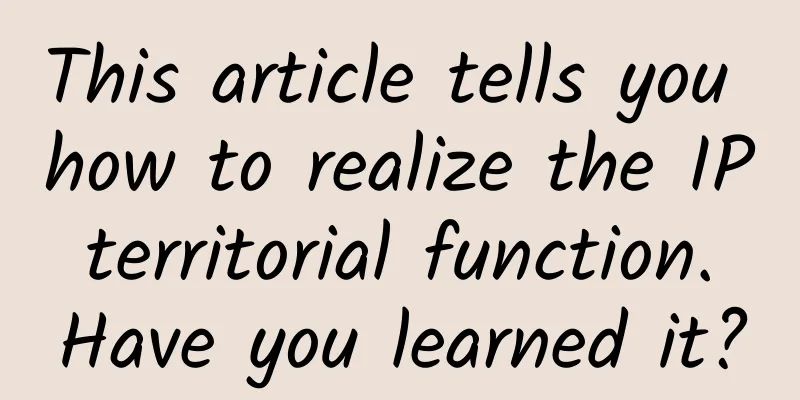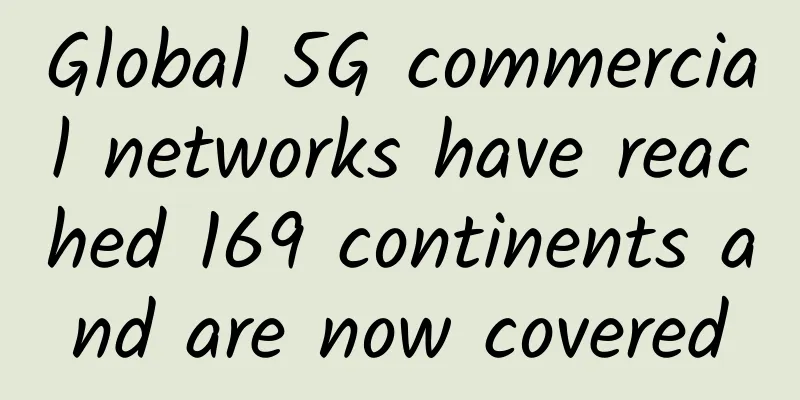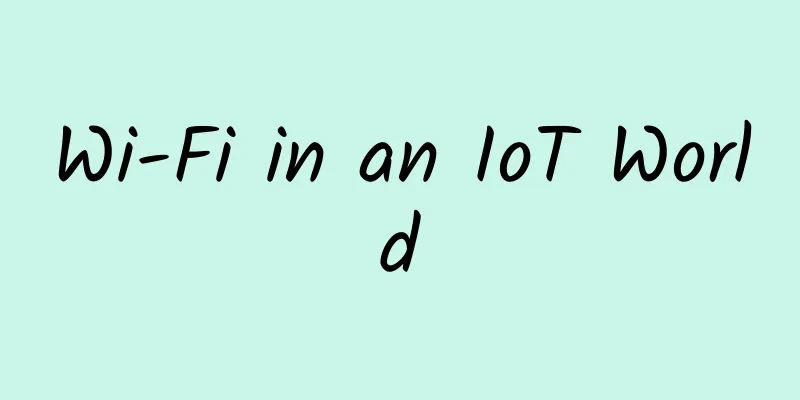This article tells you how to realize the IP territorial function. Have you learned it?

|
In web development and network applications, implementing IP location is a common requirement. With this feature, you can know the geographic location of users visiting your website. This is very useful for various application scenarios, such as providing users with more relevant content, analyzing user behavior, security auditing, etc. Next, we will introduce in detail how to implement the IP territorial function. 1. Understand IP locationIP location refers to the geographical location information associated with an IP address. Each IP address has a geographical location associated with it, usually a country or region. By querying the location information of an IP address, we can obtain the user's geographical location. 2. How to implement IP territorial functionIP DatabaseAn IP database is a database that stores IP addresses and their related information. These databases are usually provided by third-party providers and can be obtained by subscription or purchase. Common IP database providers include MaxMind and IP2Location. To implement IP geolocation using an IP database, you need to match the user's IP address with the data in the database. Typically, this can be done by querying the database or using a provided API. Once a match is found, you can return the geolocation information associated with that IP address. IP ProxyAn IP proxy is a service that changes your IP address. By using an IP proxy, you can hide your real IP address and display an IP address from another geographical location. This can be used in some cases to access blocked websites or to hide your real location. To use IP proxy for IP geolocation, you need to select a proxy server associated with the desired geographic location. Then, configure the proxy settings in your application or website to send requests through the proxy server. This way, your requests will appear to come from the IP address of the proxy server's location. Please note that using IP proxy may violate the terms and conditions of use of some services and may not be safe. Therefore, use it with caution. GeoIP ServicesA GeoIP service is an online service that returns geographic location information based on the IP address of the client sending the request. These services are usually provided by third-party providers and can be accessed through an API. Common GeoIP service providers include Cloudflare, IPinfo, and Geobytes. To use GeoIP services to implement IP geolocation, you need to send the user's IP address to the service provider's API. The API will return the geographic location information associated with the IP address. You can integrate GeoIP services in your application or website to obtain user location information in real time. Please note that GeoIP services may require an API key or other authentication mechanism to access. Therefore, be sure to comply with the service provider's terms and conditions of use. 3. Notes
|
<<: There is a 1024-bit bug. The TCP data packets are so annoying!
>>: F5 Powered by NVIDIA BlueField-3 DPU Accelerates AI Application Delivery
Recommend
OneTechCloud: VPS with discounts as low as 20%, Hong Kong CN2/CMI large bandwidth/US CN2 GIA/high defense optional
OneTechCloud is a Chinese hosting company founded...
MEC – Are we getting closer?!
Multi-access edge computing (MEC) or previously m...
The 5G era is coming. Will the WiFi you use every day disappear?
When it comes to WiFi, everyone is familiar with ...
The evolution of the Internet, the inevitability of blockchain
In the article "Bitcoin Prequel", it is...
iWebFusion: Los Angeles VPS starting at $9.38 per month, 4GB memory package, upgradeable to 10G bandwidth
iWebFusion (or iWFHosting) is a long-established ...
The world's IPv4 addresses are officially exhausted!
The long-feared exhaustion of global IPv4 address...
[Black Friday] DMIT: $139/year-Dual-core/2GB/40G SSD/1TB@300Mbps/Los Angeles CN2 GIA
DMIT.io has launched a special Black Friday packa...
Huawei releases MetaAAU, reducing energy consumption by 30% and improving performance and energy saving
Today, at the China (Beijing) International Infor...
How 5G can unlock the potential of smart homes
5G technology has been one of the hottest topics ...
Beat 5G! German team achieves the fastest wireless transmission to date, 14G data per second
Although 5G has not yet become popular, scientist...
Wenku: Improve the IPv6 standard system and develop key standards
On October 11, the 2021 China IPv6 Innovation and...
edgeNAT Mid-Autumn Festival Promotion: 20% off for monthly VPS and 30% off for annual VPS, Hong Kong CN2/Korea CN2/US CUVIP optional
edgeNAT has sent out promotions for the Mid-Autum...
Maxthon Hosting: 20% off for CN2 GIA of Los Angeles Triple Network, KVM architecture 2G memory package starting from 54 yuan per month
Maxthon Hosting has launched a new Los Angeles Tr...
What is the investment direction of the 5G trend?
Countries and regions are actively preparing for ...
6 hot trends in IT recruiting, and 5 that are cooling down
A global pandemic, the resulting recession and na...




![[11.11] RAKsmart cloud server 10% off from $2.49/month, bare metal cloud server $69/month, Japan/Hong Kong/Singapore/US data center](/upload/images/67cac023b9ba4.webp)




